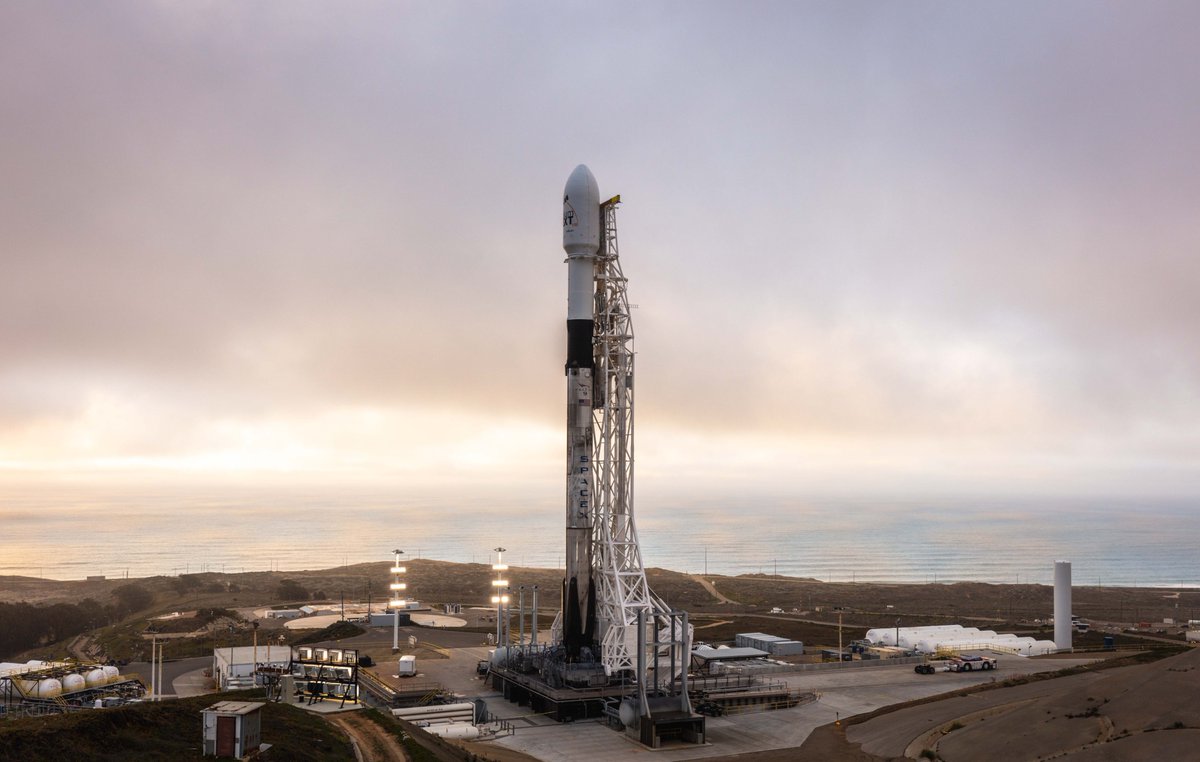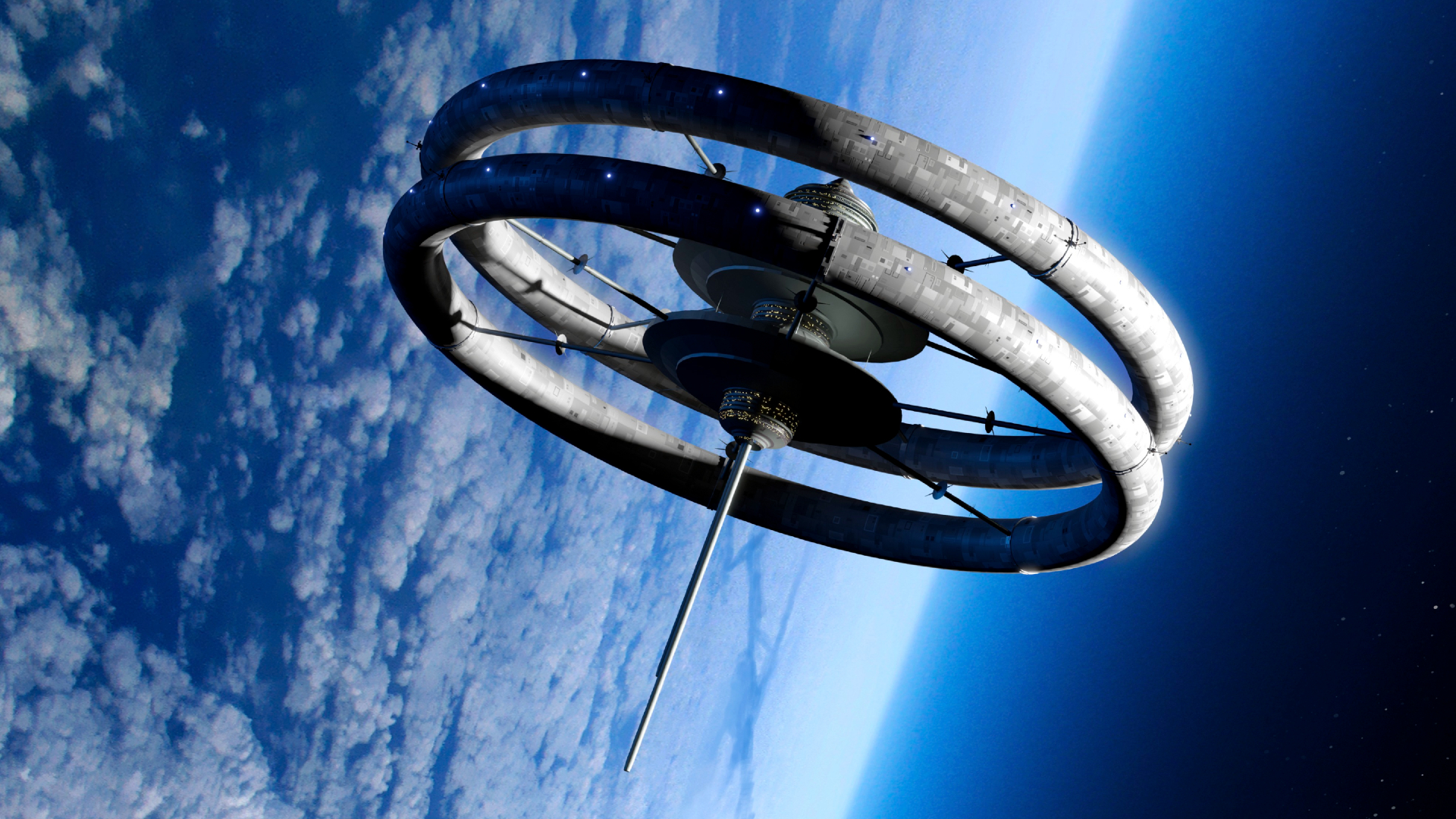SpaceX Falcon 9 rocket aces test-fire for next Starlink launch
Liftoff is scheduled for this weekend.

SpaceX successfully test-fired a Falcon 9 rocket in Florida today (May 13), setting the stage for a predawn launch of a a new fleet of Starlink internet satellites this weekend.
The SpaceX rocket ignited the nine Merlin engines on its first stage in a brief static fire test atop a pad at Space Launch Complex 40 of the Cape Canaveral Air Force Station. Liftoff is set for Sunday at 3:53 a.m. EDT (0753 GMT).
"Static fire test of Falcon 9 complete — targeting Sunday, May 17 at 3:53 a.m. EDT, 7:53 UTC, for launch of the eighth Starlink mission, which will lift off from SLC-40 in Florida," SpaceX wrote on Twitter today.
SpaceX test-fired a Falcon 9 rocket on pad 40 at Cape Canaveral Air Force Station at 10am EDT (1400 GMT) in preparation for launch no earlier than Sunday with the next batch of Starlink satellites. pic.twitter.com/66ru9THtArMay 13, 2020
Static-fire tests are routine preflight checks for SpaceX to ensure its rockets are ready for flight. The Falcon 9 rocket on this flight has flown four times before, launching two Starlink missions for SpaceX, as well as the Iridium-8 mission in 2019 and Telstar 18 VANTAGE satellite in 2018.
For this flight, the Falcon 9 will carry 60 Starlink satellites for SpaceX's growing constellation of broadband internet satellites. The company has launched 422 satellites to date, making it the largest satellite fleet operator today.
The upcoming Starlink mission will be SpaceX's eighth since mid-2019 and bring the number of satellites launched to 482. The Starlink constellation is designed to provide high-speed internet access to users around the world.
SpaceX CEO Elon Musk has said that at least 400 Starlink satellites would be required to begin internet service, with 800 satellites needed for moderate coverage. That service will be accessible through a ground-based terminal. SpaceX plans to launch at least 12,000 Starlink satellites for the main constellation.
Breaking space news, the latest updates on rocket launches, skywatching events and more!
Sunday's Falcon 9 launch will mark the second time a SpaceX booster has flown five times (the first was in March of this year). The 229-foot-tall (70 meters) Falcon 9 is a two-stage rocket capable of returning its first stage to Earth for a landing on either a ground-based pad or drone ship in the ocean.
SpaceX has been reusing Falcon 9 boosters since 2017. The company has made resuability a cornerstone of its rocket technology in order to lower the cost of spaceflight.
- In Photos: SpaceX launches third batch of 60 Starlink satellites to orbit
- SpaceX's Starlink broadband service will begin in 2020: Report
- Why SpaceX's Starlink satellites caught astronomers off guard
Email Tariq Malik at tmalik@space.com or follow him @tariqjmalik. Follow us @Spacedotcom, Facebook and Instagram.
OFFER: Save 45% on 'All About Space' 'How it Works' and 'All About History'!
For a limited time, you can take out a digital subscription to any of our best-selling science magazines for just $2.38 per month, or 45% off the standard price for the first three months.

Tariq is the award-winning Editor-in-Chief of Space.com and joined the team in 2001. He covers human spaceflight, as well as skywatching and entertainment. He became Space.com's Editor-in-Chief in 2019. Before joining Space.com, Tariq was a staff reporter for The Los Angeles Times covering education and city beats in La Habra, Fullerton and Huntington Beach. He's a recipient of the 2022 Harry Kolcum Award for excellence in space reporting and the 2025 Space Pioneer Award from the National Space Society. He is an Eagle Scout and Space Camp alum with journalism degrees from the USC and NYU. You can find Tariq at Space.com and as the co-host to the This Week In Space podcast on the TWiT network. To see his latest project, you can follow Tariq on Twitter @tariqjmalik.

